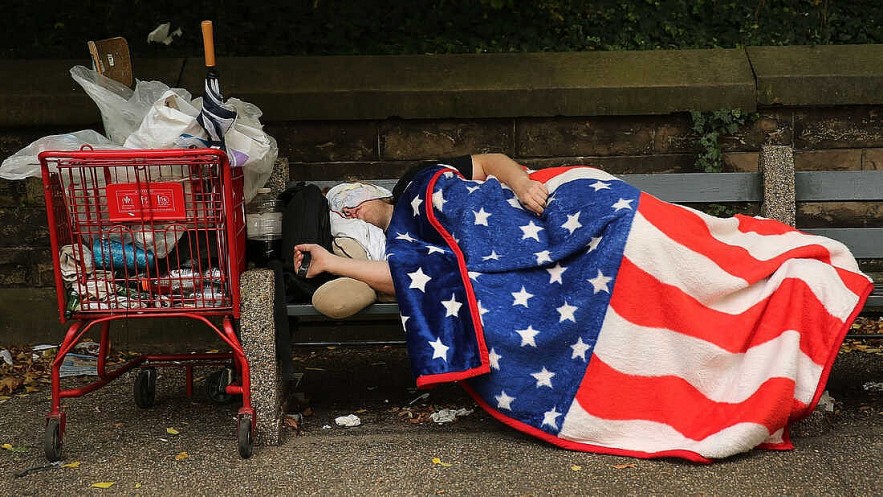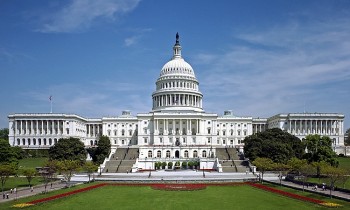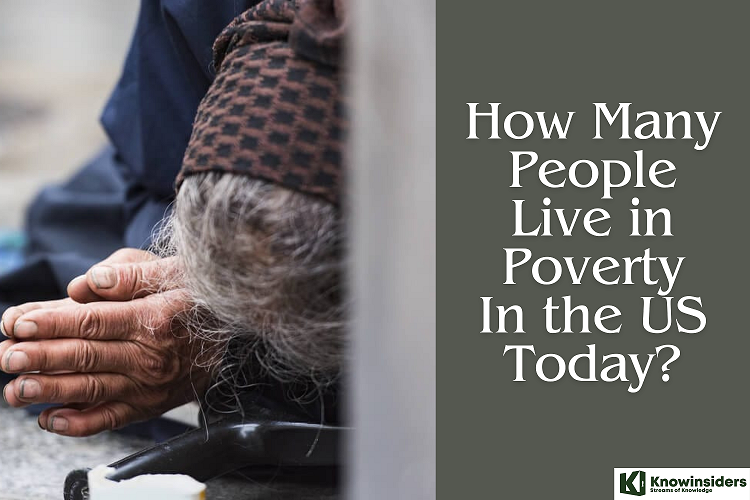Top 10 States With Highest Poverty Rate In The US
 |
| Top 10 States With Highest Poverty Rate In The US |
| Table of Contents |
How does the federal government define poverty?
The federal government defines poverty according to family size and income. If a family's total income is less than the federal poverty line, the family is deemed impoverished. The official poverty line is changed periodically to reflect inflation.
Let us take 2021 poverty data from the Department of Health and Human Services (HHS) as an example. Using the official poverty line, a family of four would be considered poor if their yearly household income was $26,500 or less before taxes. (In 2020-2021, the median household income for a family of this size was $90,657)
Because the metric is defined at the federal level, it does not account for differences in cost of living across the country, which can lead to counting inaccuracies.
What are the different methods for measuring poverty?
Poverty can be measured using two methods: poverty guidelines and poverty thresholds.
The HHS employs poverty rules to establish a person's financial eligibility for federal benefits and programs designed for low-income Americans. These include the Supplemental Nutrition Assistance Program (SNAP), popularly known as food stamps, Medicaid, and income-based repayment options for federal student loans.
Meanwhile, the Census Bureau establishes poverty standards for the official poverty measure and the Supplemental Poverty Measure (SPM) to determine how many Americans live in poverty each year. This statistic is then used to assess community patterns and present economic conditions, as well as to compare demographic groups.
Simply said, poverty standards are administrative; poverty criteria are statistical.
How many people are in poverty in the United States?
According to fresh figures, 37.9 million people lived in poverty in 2022. America had made significant progress in poverty reduction over the preceding two years. Millions of people were pulled out of poverty thanks to safety net programs like the enlarged child tax credit, which gave direct assistance to low-income households.
Who lives in poverty in the US?
All people who earn less than the federal government's official poverty line, which for a family of four is around $25,700. People working at the minimum wage, even if they have many jobs. Seniors living on a fixed income. Wage earners are suddenly out of job. Millions of families throughout our cities and rural villages.
Poverty varies by gender. In 2018, 10.6% of males and 12.9% of women lived in Poverty USA. In 2018, the poverty rate for married couples was only 4.7%; however, the poverty rate for single-parent families without a wife was 12.7%, and for single-parent families without a husband was 24.9%.
In 2018, the poverty rate among people with disabilities was 25.7%. Nearly 4 million people with disabilities live in poverty.
Poverty by Age in the United States
Children in Poverty
In 2018, 16.2% of all children (11.9 million) lived in Poverty USA—nearly one out of every six youngsters.
In 2015, the National Center on Family Homelessness reviewed state-level data and discovered that 2.5 million children experience homelessness each year.
Seniors in Poverty
Though the official census data shows that seniors' poverty rate in 2018 was only 9.7%, the Supplemental Poverty Measure, which takes into consideration factors such as rising health-care costs, elevates the senior poverty rate to 14.1%.
Causes of Poverty in the US
Impoverished households had lower levels of education, greater health problems, and less access to nutritious food. They are also more likely to reside in high-crime neighborhoods.
Educational Levels
The higher one's education level, the better the chances of achieving a solid economic future. African American and Hispanic kids have over 20% lower high school graduation rates than other ethnic groups, and their poverty rates are significantly higher than the national average.
Without the knowledge and skills essential for well-paid labor in the modern world, each consecutive generation of undereducated people just replaces the one that came before them, with little opportunity for upward mobility or escape from poverty.
The Catch-22 is that educational opportunities may hinder financial security due to student debts and debt.
Access to Healthcare is highly linked to income. Poor people have greater death rates, a higher incidence of acute or chronic diseases, and more emotional and behavioral problems.
According to a 2016 Journal of the American Medical Association analysis, the richest 1% in the United States has a 14.6-year higher life expectancy than the lowest 1% for men and 10.1 years for women.
As of early 2023, the United States had a startlingly low overall life expectancy of 76.4 years. That is the lowest expectancy in more than 20 years.
According to the Centers for Disease Control and Prevention, African American infant death rates (10.4 per 1,000 live births) were more than double those of white infants (4.4) in 2020.
According to the Office of Disease Prevention and Health Promotion, people who live in disadvantaged districts are more likely to suffer from mental illness, chronic disease, increased mortality, and a shorter life expectancy.
According to the CDC, poor children are more than twice as likely to have elevated levels of lead in their blood as other children.
Access to Food
Food poverty is described as the inability to access nutritious, inexpensive food. Poorer families tend to consume less fruits and vegetables and more junk food. They are also more likely to suffer from cancer, diabetes, obesity, and heart disease.
Food insecurity and poverty are not synonymous, yet they are associated. Food insecurity occurs when there is a scarcity or uncertainty about the availability of nutritionally appropriate food. According to the United States Department of Agriculture (USDA), 12.8% of American households would face food insecurity in 2022. Blacks and Hispanics have nearly twice the rate of food insecurity as whites.
Crime
Poverty and crime have a complex relationship, with numerous factors contributing to both, including unemployment, population density, high school dropout rate, and drug use.
While difficult to quantify, certain studies have found that when the poverty rate in a particular population rises, so does crime, particularly violent crime.
Top 10 States With the Highest Poverty Rates in the US
1. New Mexico (18.2% of the population lives below the poverty line)
New Mexico is the poorest state in the United States, with an 18.2% poverty rate. Factors contributing to the state's poverty include a large rural population, insufficient economic diversification, and poor educational attainment levels. Efforts are being made to solve these challenges and boost economic growth, but poverty remains a major issue in the Land of Enchantment.
2. Mississippi (17.8 percent)
Mississippi is the second poorest state in the United States, with a 17.8% poverty rate. Despite the state's rich history, cultural heritage, and abundance of natural resources, poverty is still a major issue. The state's high poverty rate is ascribed to a number of issues, including a scarcity of well-paying jobs, limited access to education and healthcare, and a low minimum wage. Furthermore, the state's history of racial discrimination has fueled institutional inequities that perpetuate poverty. Despite efforts to address the issue, poverty continues to be a major burden in Mississippi.
3. Louisiana (16.9%)
4. Arkansas (15.9%)
5. Kentucky (15.8%)
6. Oklahoma (15.8%)
7. West Virginia (15.6%)
8. Alabama (14.8 %)
9. Texas (13.7%)
10. North Carolina (13.3 percent)
10 (tie). South Carolina (13.3 percent)
Conclusion
According to the US Census Bureau, 37.9 million Americans live in poverty, accounting for 11.6% of the total population.
The statistic published by the Census Bureau is based on the official poverty measure, which has stayed almost unchanged since the mid-1960s.
In response, the Census Bureau created the Supplemental Poverty Measure in 2011 to improve on the existing measure.
 Top 10 States In The US With Highest Number of Federal Workers Top 10 States In The US With Highest Number of Federal Workers Government or federal positions are frequently an excellent choice for those seeking career security, strong benefits, and optional retirement plans. Check out Top 10 States ... |
 Top 10 States With The Highest and Lowest Teacher’s Salaries In The US Top 10 States With The Highest and Lowest Teacher’s Salaries In The US Which US states pay their teachers the most and the least, do you know? Take a look at the article directly below! |
 Which States Receive The Most and The Least Federal Aids In The US? Which States Receive The Most and The Least Federal Aids In The US? Grants are the main way that the federal government helps states with their different projects. Check out Which States Receive The Most and The Least ... |

























